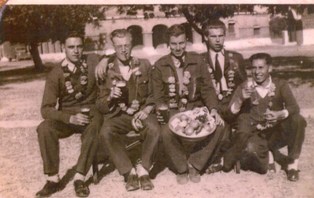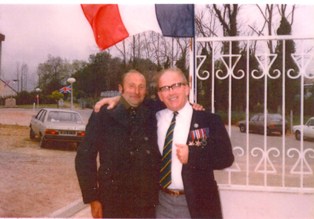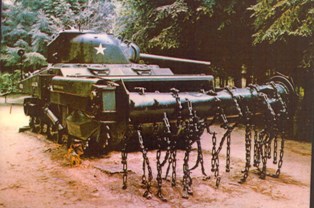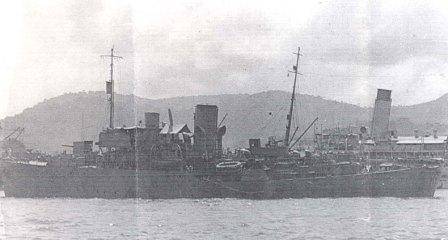
Private 26792 Alfred Henry Bass
6th Northamptonshire Regiment
Killed in Action 17th February 1917
Regina Trench Cemetery, Grandcourt, Sp. Mem. A. 5
Born: Hemel Hempstead
Enlisted: Hemel Hempstead
Private Alfred H. Bass of the 6th Northamptonshire Regiment of 112 Cotterells, was killed in action on 17th February 1917; he enlisted with the Royal Field Artillery. He had been previously employed at Apsley Mills as a stock keeper, as well as being a member of the Hemel Hempstead Salvation Army Band. He is buried in Regina Trench Cemetery, Grandcourt.
On 17th February 1917, the 6th Northamptonshire Regiment was in the Boom Ravine Battle, in which Alfred Bass was killed. The battle was planned for this time as the harsh winter was coming to an end and it was the perfect time to launch an attack. This battle saw three divisions attack together: two attacking the German positions on the Ancre Heights (close to the village of Courcelette) and other slightly north of the Ancre Valley. The Ravine had two lines of trenches protecting it - the Regina Trench and Desire Trench – these trenches had most recently been captured by Canadian troops.
They had orders to begin at 4:45am and had been preparing for the battle for 2 days, after having relieved the 8th East Surrey Regiment on the 15th February 1917. The battle took place in a ‘Ravine’ or ‘Gully’ (named so by the soldiers’ diaries), with the enemy positioned on the opposite side. By 4:15am, the three leading platoons were in position.
At 4:20am the weather was described as being particularly cloudy and cold - with even reports of snow on the ground. Many reports suggested that the men found it difficult to form a barrage as the lack of visibility made it easy for them to lose where they were aiming, until up to 6am. By 4:30am the last platoon was in position; however, there seemed to be a communication issue with leaked information from deserters (which many reports suggest as being unusual, yet not unheard of). According to diary entries, six hours before the attack, the enemy had been told when zero hour (the time military operations occur) was to be, but fortunately they were told it would be at 4:15am, rather than the actual time of 4:45am. The idea that information had been passed to the enemy was accepted by the soldiers as the shelling got much heavier between 4:50 am and 5:30am: suggesting that the enemy was trying to prevent an advance that they had been warned about.
This battle, according to reports, seems to be made up of a few different periods of heavy shelling and machine gun fire - with one of the worst recorded periods being at around 4:45am, when the 4th Company moved into their position (North-East of the Gully). It is suggested that this period was a time of very high numbers of casualties, with many of the men lying in the mud for several hours after being hit. It is very likely that Alfred Bass was killed during this time also.
Many soldiers are praised and occasionally named in the reports for working through the difficult conditions: two of whom include Boulton and Cuthbert. They were very calm at directing the troops in challenging conditions, particularly as the report suggests, that, aside from the artillery and guns, poisonous gas was also being used, which had devastating effects. They also used shrapnel shells to help cut through barbed wire, which proved to be very helpful and allowed soldiers to cross the ravine, thus entering enemy trenches.
The Boom Ravine Battle cost the lives of at least 2200 men, including Alfred Bass, but they were successful at pushing the German lines back and made the Germans consider abandoning this line in favour of others (Hindenburg).

Boom Ravine Trench Map 1917, from:
https://westernfront1917.wordpress.com/2017/02/17/boom-ravine-somme-1917/
Sources:
-
6th Northamptonshire Regiment War Diary, Catalogue Reference: WO 95/2044
- http://www.wartimememoriesproject.com/greatwar/allied/battalion.php?pid=6831
- file:///home/chronos/u-1335f4457f1a3506e379f884016efbe502eb0d99/Downloads/BASS_A_H.pdf
- http://www.cwgc.org/find-war-dead/casualty/234479/BASS,%20A%20H
- http://www.wartimememoriesproject.com/greatwar/view.php?uid=1205991
- http://1914-1918.invisionzone.com/forums/index.php?/topic/47784-northamptonshire-regiment-6th-battalion/
- http://www.hertfordshire-genealogy.co.uk/documents/Hemel%20Hempstead%20Roll%20of%20Honour.pdf
- http://www.dacorumheritage.org.uk/first-world-war-database/hemel-hempstead-soldiers-details/hemel-hempstead-war-memorial-1/
- https://westernfront1917.wordpress.com/2017/02/17/boom-ravine-somme-1917/
- https://drive.google.com/file/d/0B1B57_VTQrA5ZHA5QjhGX3dSQXc/view?ts=595243ca – war diaries
By Zara Briggs, Abbie Clark and Eleanor Clark.
27th June 2017





